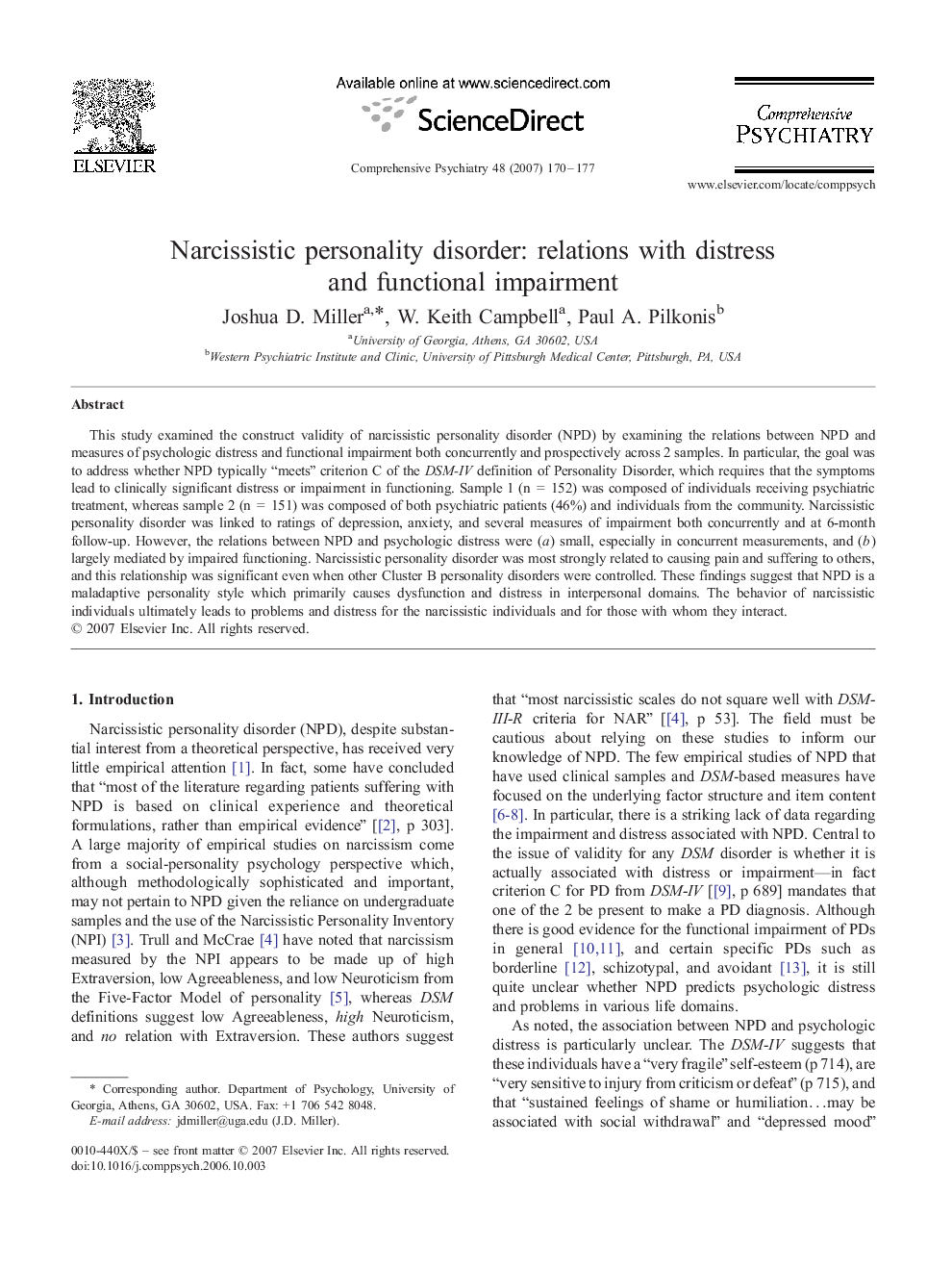| کد مقاله | کد نشریه | سال انتشار | مقاله انگلیسی | نسخه تمام متن |
|---|---|---|---|---|
| 317904 | 538245 | 2007 | 8 صفحه PDF | دانلود رایگان |
1. مقدمه
جدول 1. محور تشخیص فعلی من
2. روش
2.1. شرکت کنندگان وشيوه ها
2.1.1. نمونه 1
2.1.2نمونه2
2.2پيشگيريها
2.2.1 معیارهای انطباق DSM-III-R (نمونه 1) و DSM-IV (نمونه 2) ملاك اختلال شخصیت
2.2.2 PDQ-4 + (نمونه 2)
2.2.3 ارزیابی اجماعی اختلال (نمونه ها 1 و 2)
2.2.4 ارزيابي بالینی افسردگی، اضطراب و عملکرد (نمونه 1 و 2)
2.2.5 پیگیری شش ماهه
3.2 تجزیه و تحلیل آماری
3. نتایج
3.1گرفتن خودشيفتگي: روابط همزمان و طولی
3.1.1تفاوت های جنسیتی
3.1.2 ارتباط با پريشاني روانشناختی و اختلال: یافته های همزمان و طولی
جدول 2. توصيف NPD: روابط با آسیب شناسی رواني و اختلال در محور I
3.1.3 اختلال به عنوان واسطه ارتباط بین خودشيفتگي و پریشانی روانشناختی
3.1.4 تکرار تجزیه و تحلیل میانجی گری با گزارش خود
3.1.5 خودشيفتگي: روابط پیش بینی منحصر به فرد نتایج 6 ماهه کنترل براي خوشه B PDs
آرايش 1: میانجیگری رابطه بین NPD و پریشانی روانشناختی. P V.05 tP V.07 *، ** P V.01. اثرات مستقیم خودشيفتگي برنتيجه متغیرهای در داخل پرانتز ذکر شده است.
جدول 3. روابط پیش بینی منحصر به فرد در طول 6 ماه: خودشيفتگي و آسيب شناسي رواني
4. بحث
4.1 محدودیت ها
4.2نتیجه گیری
This study examined the construct validity of narcissistic personality disorder (NPD) by examining the relations between NPD and measures of psychologic distress and functional impairment both concurrently and prospectively across 2 samples. In particular, the goal was to address whether NPD typically “meets” criterion C of the DSM-IV definition of Personality Disorder, which requires that the symptoms lead to clinically significant distress or impairment in functioning. Sample 1 (n = 152) was composed of individuals receiving psychiatric treatment, whereas sample 2 (n = 151) was composed of both psychiatric patients (46%) and individuals from the community. Narcissistic personality disorder was linked to ratings of depression, anxiety, and several measures of impairment both concurrently and at 6-month follow-up. However, the relations between NPD and psychologic distress were (a) small, especially in concurrent measurements, and (b) largely mediated by impaired functioning. Narcissistic personality disorder was most strongly related to causing pain and suffering to others, and this relationship was significant even when other Cluster B personality disorders were controlled. These findings suggest that NPD is a maladaptive personality style which primarily causes dysfunction and distress in interpersonal domains. The behavior of narcissistic individuals ultimately leads to problems and distress for the narcissistic individuals and for those with whom they interact.
Journal: Comprehensive Psychiatry - Volume 48, Issue 2, March–April 2007, Pages 170–177
